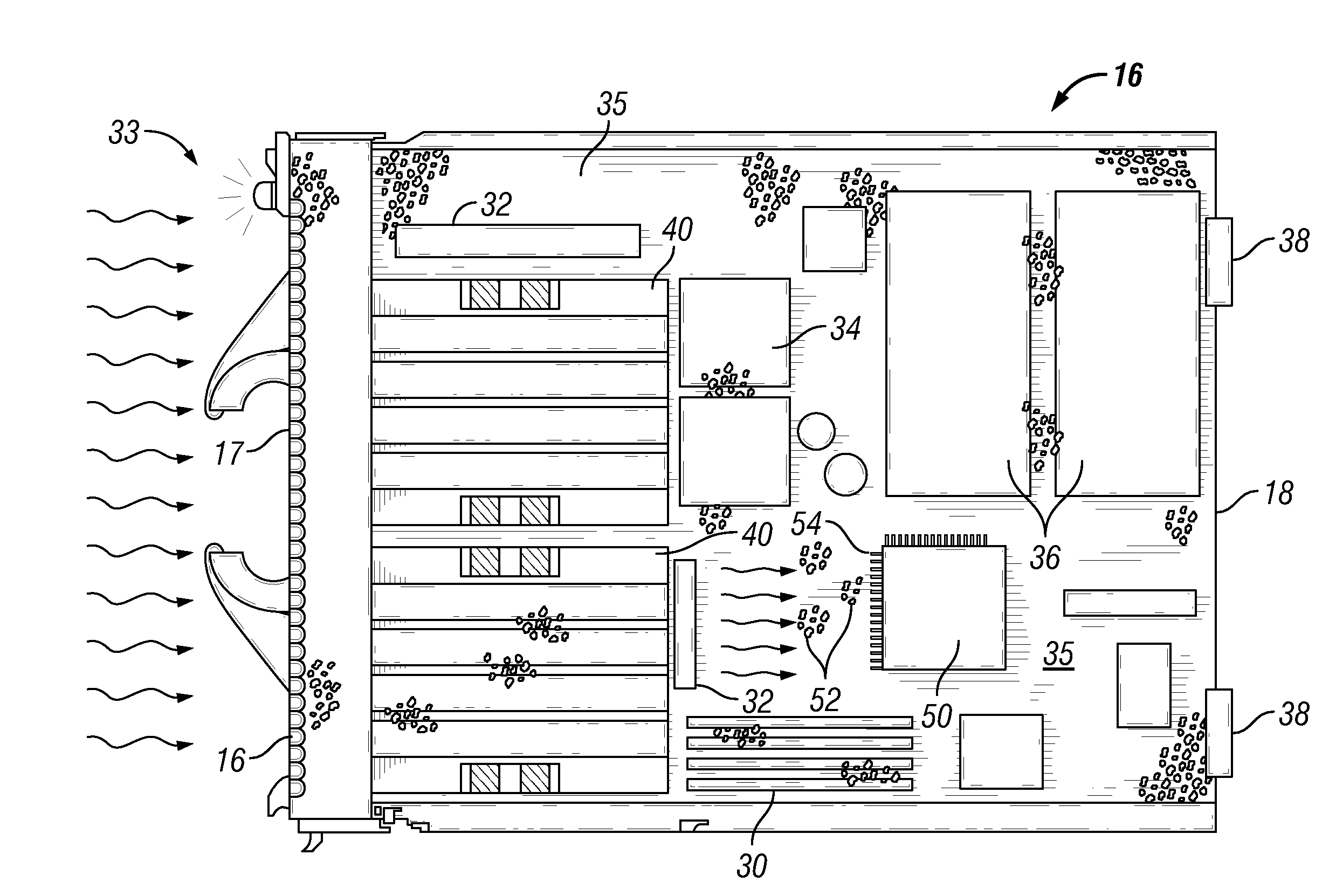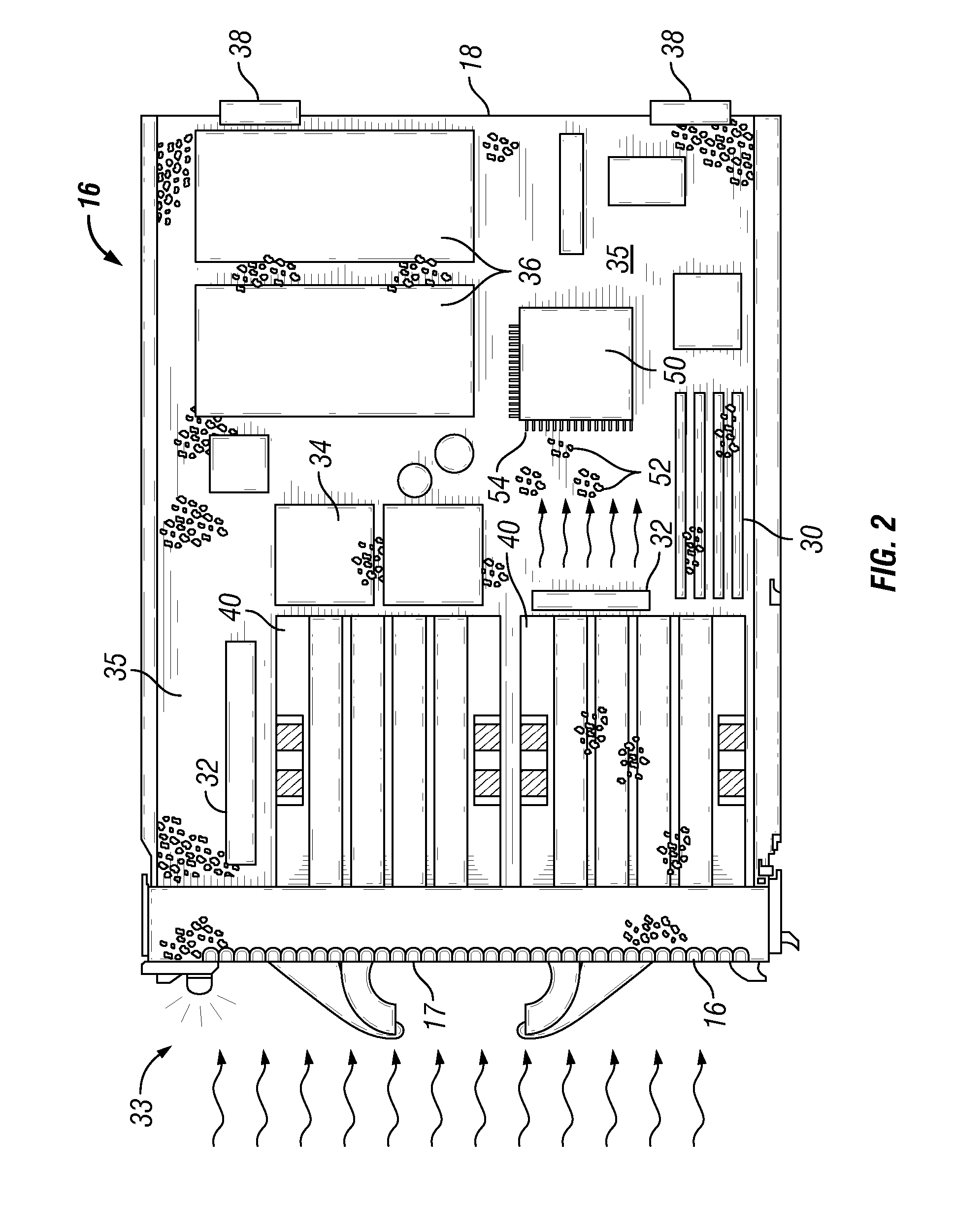Capacitive detection of dust accumulation using microcontroller component leads
a microcontroller and component lead technology, applied in the direction of resistance/reactance/impedence, instruments, measurement devices, etc., can solve the problems of reducing system performance, increasing the amount and rate of dust deposited, and airflow used to cool a computer carrying dus
- Summary
- Abstract
- Description
- Claims
- Application Information
AI Technical Summary
Problems solved by technology
Method used
Image
Examples
Embodiment Construction
[0018]The present invention provides a system and method for electronically detecting the presence of dust within a computer system using a microcontroller (“chip”) having built-in capacitive sensing technology. One of the chips customarily included with a computer system, such as the CPU, Ethernet Controller, Memory Controller, IO Controller, or Video Controller, may be modified or re-designed to include a capacitive-sensing subsystem. Alternatively, a separate chip having built-in capacitive sensing technology could be added to an existing system configuration. The dust detection system may be implemented in a stand-alone computer, such as an individual PC, or in a more expansive system, such as a rack-based blade server system (“rack system”) having multiple blade servers and other hardware devices. The chip is configured to detect a change in capacitance consistent with the accumulation of dust. When the capacitance reaches a setpoint, the chip generates an alert. This provides ...
PUM
 Login to View More
Login to View More Abstract
Description
Claims
Application Information
 Login to View More
Login to View More - R&D
- Intellectual Property
- Life Sciences
- Materials
- Tech Scout
- Unparalleled Data Quality
- Higher Quality Content
- 60% Fewer Hallucinations
Browse by: Latest US Patents, China's latest patents, Technical Efficacy Thesaurus, Application Domain, Technology Topic, Popular Technical Reports.
© 2025 PatSnap. All rights reserved.Legal|Privacy policy|Modern Slavery Act Transparency Statement|Sitemap|About US| Contact US: help@patsnap.com



